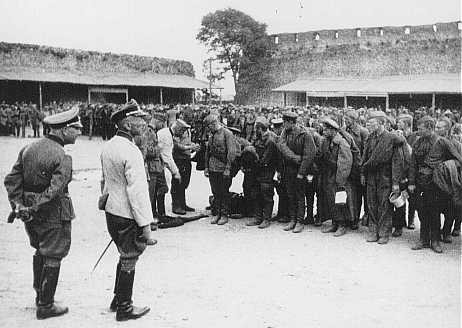
Commissar Order
The Commissar Order was issued by the German Armed Forces High Command on June 6, 1941. It ordered soldiers to shoot Soviet Communist Party officials taken prisoner. The Commissar Order reflected the deeply ideological nature of the German war against the Soviet Union.
The deeply ideological nature of the Germans' fight against the Soviet Union was reflected in the "Commissar Order" issued by the German Armed Forced High Command on June 6, 1941.
Political commissars were Soviet Communist Party officials who oversaw its military units and reported directly to party leaders. Operating as they did outside the military hierarchy, commissars acted as a conduit from the party to the ranks of ordinary soldiers, transmitting political propaganda and preventing dissension.
To the Germans, commissars represented the true "pillars of opposition," the link between the Bolshevik ideologies and the minions in the military who the Nazis believed fought blindly for Bolshevism. For that reason, German soldiers were ordered to shoot any political commissars who were taken prisoners.
The Commissar Order read:
"The originators of barbaric, Asiatic methods of warfare are the political commissars.... Therefore, when captured either in battle or offering resistance, they are to be shot on principle."
During the initial attack on the Soviet Union throughout the summer and autumn of 1941, the German armed forces generally complied with this order. In May 1942, however, the Commissar Order was rescinded at the urging of German field commanders, who came up against much stronger resistance when the routine shooting of the commissars became known to Soviet soldiers.
Just as the Nazis targeted political commissars as agents of the Soviet Communist Party, they regarded Soviet prisoners of war (POWs) as an integral part of the so-called Bolshevik menace. The Germans killed POWs in massive numbers, not as a result of military operations but as a part of Nazi racial policy.
Critical Thinking Questions
- What was the German code of conduct regarding POWs before 1941?
- How did the treatment of Soviet prisoners of war illustrate Nazi ideological beliefs?
- Investigate international codes of conduct for the treatment of captured military personnel.

